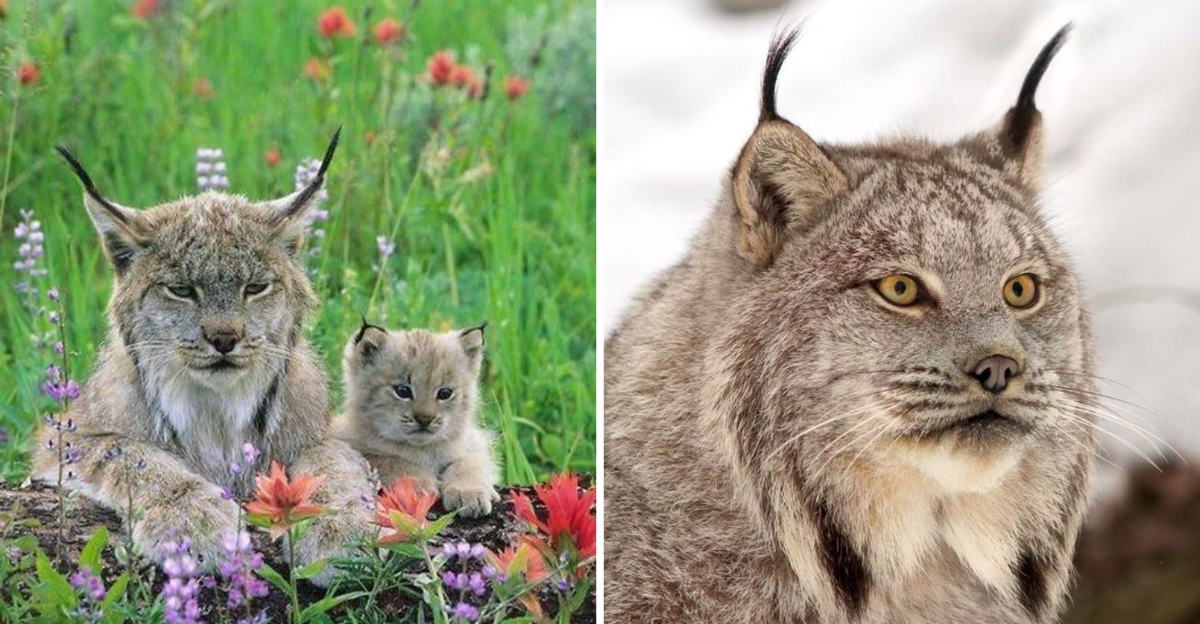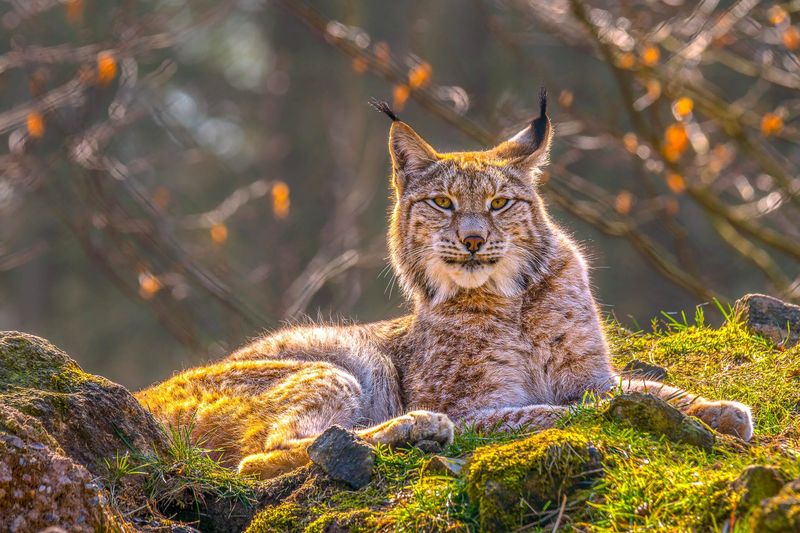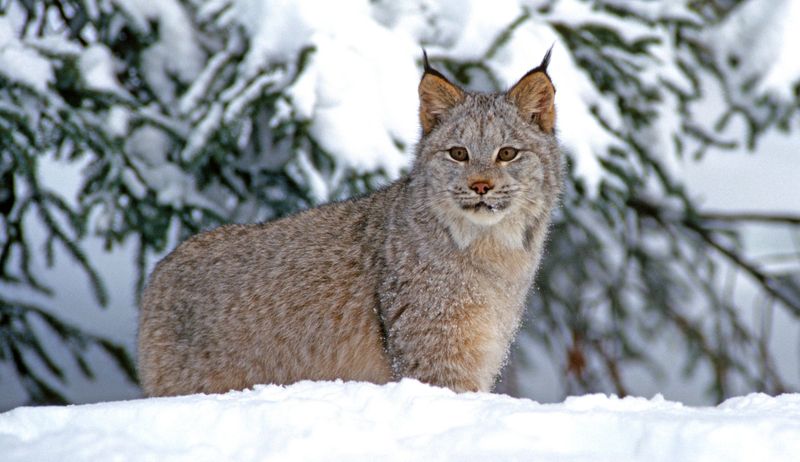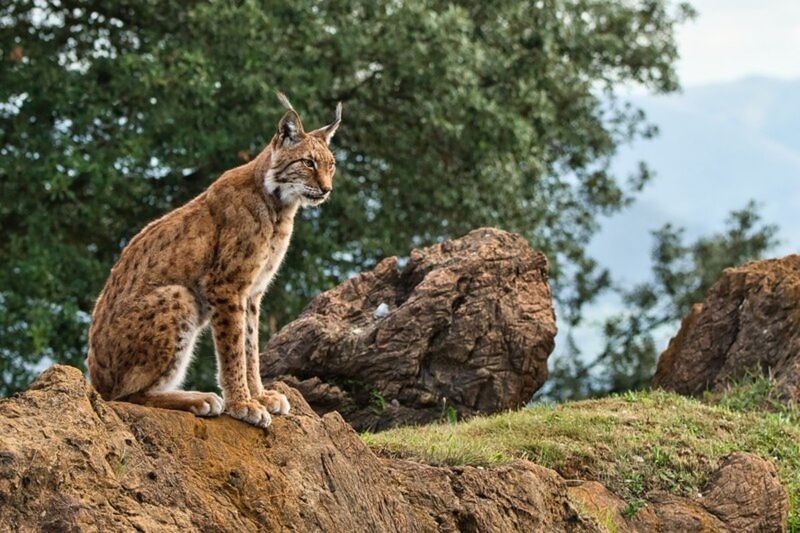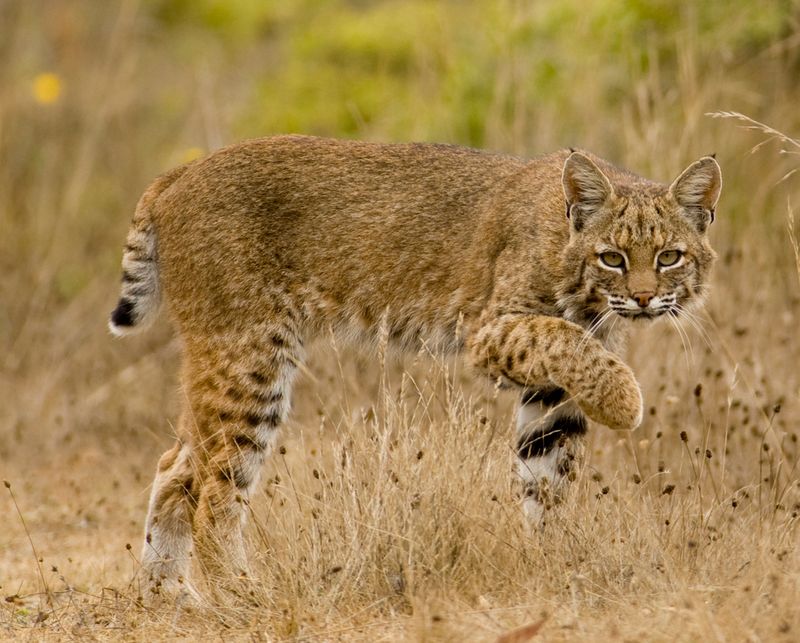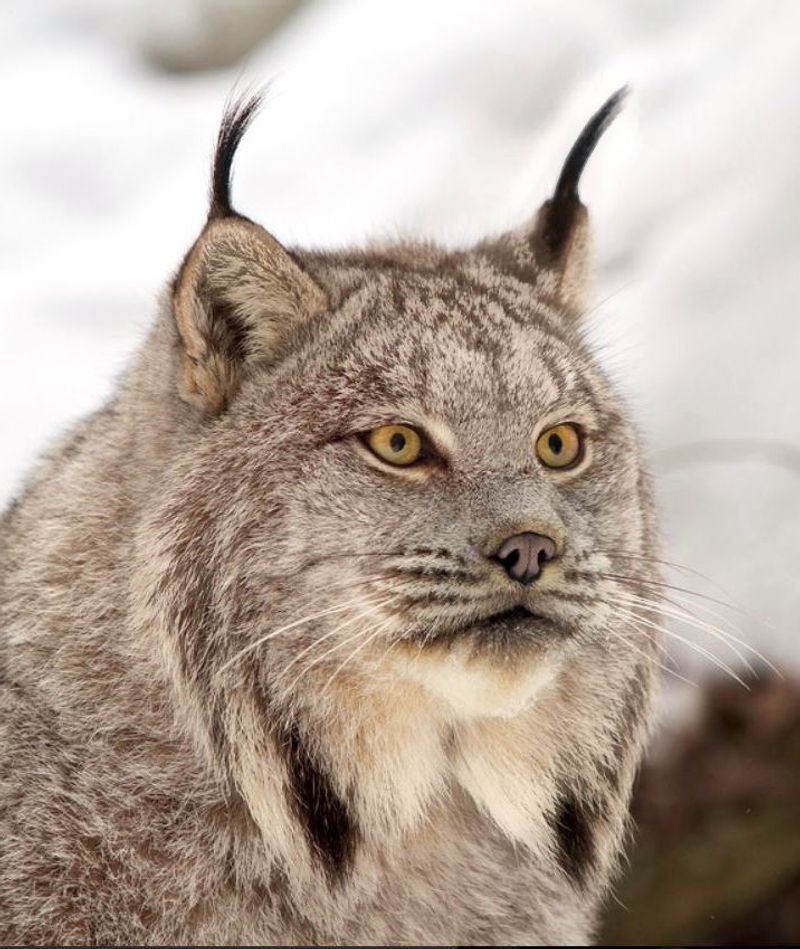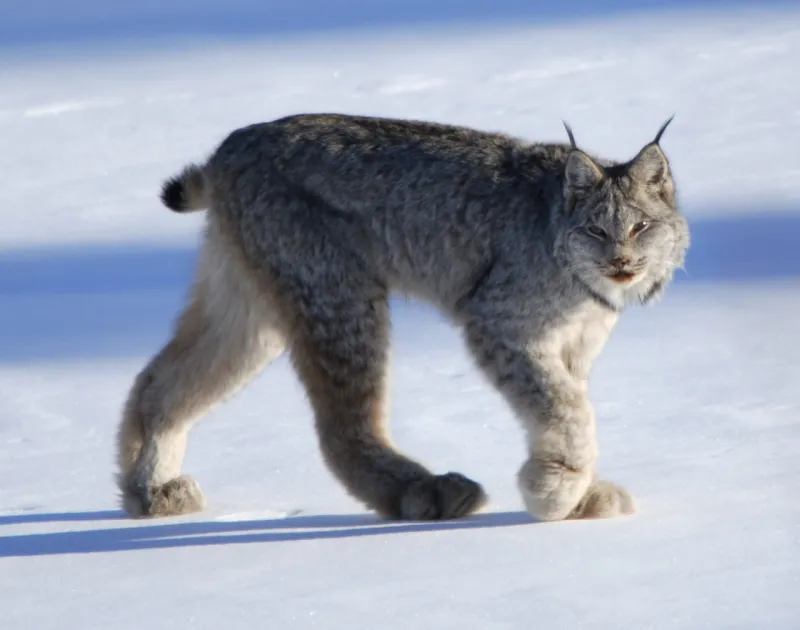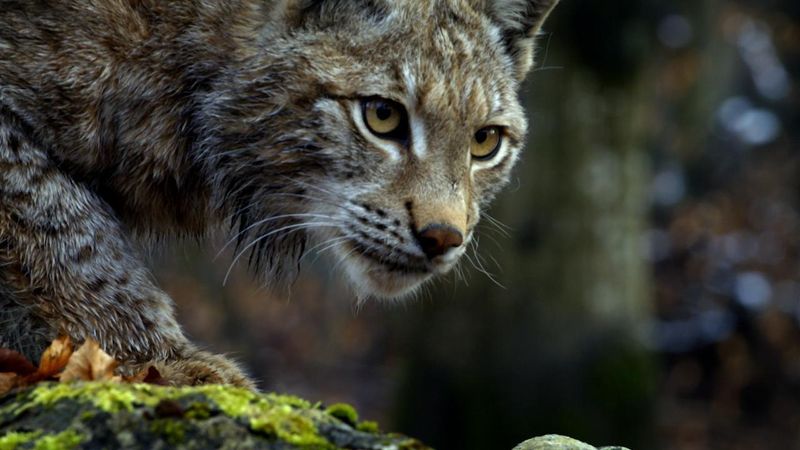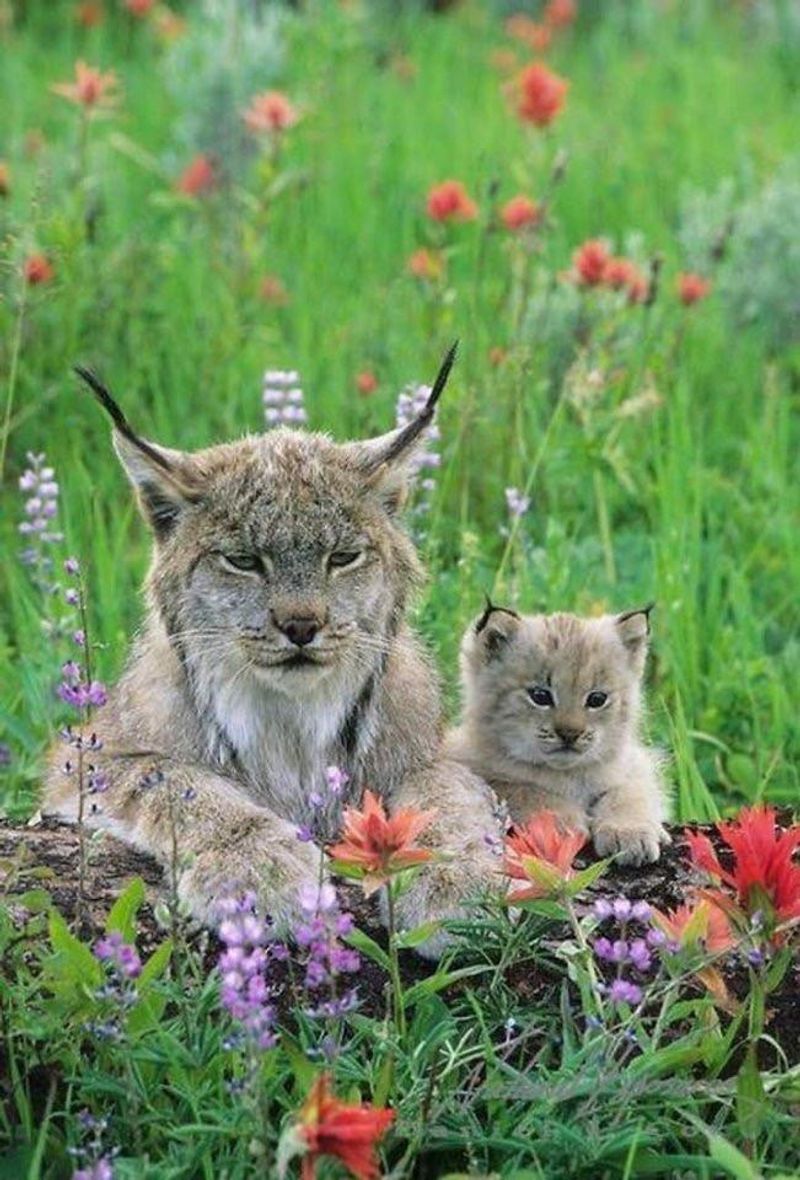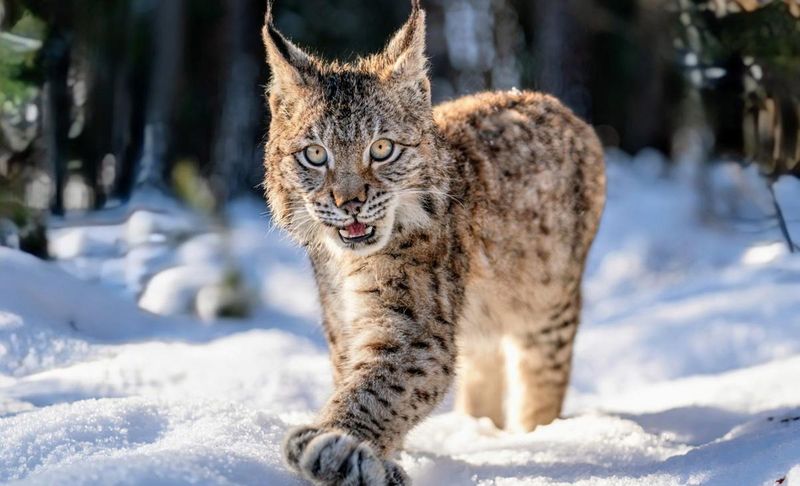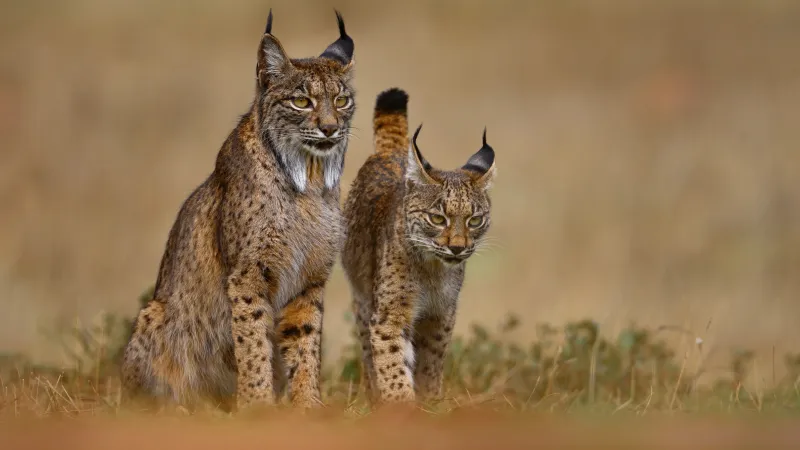📖 Table of Content:
Lynx cats, known for their tufted ears and short tails, are captivating wild felines. The genus Lynx consists of four distinct species, each adapted to its unique environment. With large, padded paws, these medium-sized cats navigate snowy landscapes with ease. Lynx cats exhibit diverse behaviors and physical characteristics, making them fascinating subjects for observation and study. As solitary hunters, they rely on their keen senses to thrive in the wild. Conservation efforts have played a significant role in the population recovery of certain species, emphasizing the importance of preserving these remarkable animals.
1. Eurasian Lynx
The Eurasian Lynx, a symbol of wilderness, roams the vast forests of Europe and Asia. With tufted ears and a robust build, it commands attention. This solitary feline is a master of stealth, relying on its keen senses to hunt. Its thick fur adapts to changing seasons, providing camouflage and warmth. Did you know that this lynx can leap up to two meters? Such agility makes it an adept predator. Despite its elusive nature, conservation efforts have been crucial in maintaining its habitat.
2. Canada Lynx
In the icy reaches of North America, the Canada Lynx prowls with grace. Renowned for its oversized paws, this lynx is perfectly adapted to snowy terrains. Its primary prey, the snowshoe hare, dictates its movement patterns. During harsh winters, its fur thickens, blending seamlessly with the white surroundings. How does it maintain such balance and agility? Evolution has sculpted it into a formidable hunter. Conservationists emphasize the importance of sustaining its prey to ensure the lynx’s survival.
3. Iberian Lynx
Once on the brink of extinction, the Iberian Lynx has made a remarkable comeback. Native to the Iberian Peninsula, its spotted coat is a marvel of evolution. With a preference for Mediterranean scrubland, this lynx finds solace in sunlit habitats. Efforts to revitalize its prey, particularly rabbits, have been pivotal. The success story of its conservation is a testament to human dedication. Curious about its distinctive vocalizations? They play a crucial role during mating seasons.
4. Bobcat
The Bobcat, with its boundless adaptability, thrives across North America. From dense forests to arid deserts, this lynx adjusts to diverse terrains. Its short tail, adorned with a black tip, is a distinctive feature. While often solitary, its keen senses make it a proficient hunter. Did you know that the bobcat’s diet can range from rodents to deer? This dietary flexibility aids its survival. Its resilience is a testament to nature’s ingenuity and adaptability.
5. Physical Characteristics of Lynx
Lynx cats are instantly recognizable by their tufted ears, which enhance their hearing. These tufts are not merely decorative but serve a functional purpose. Their eyes, often a piercing golden hue, convey a sense of mystery. In colder climates, their fur becomes denser, providing insulation against harsh winds. Their large, padded paws act like natural snowshoes, enhancing their mobility in snow. How do these characteristics aid their survival? Evolution has finely tuned these traits for optimal adaptation.
6. Fur and Adaptations
In the world of lynx cats, fur is more than just a coat – it’s a survival tool. Varying from light brown to gray, their fur often features spots for camouflage. As temperatures drop, this coat thickens, offering warmth and stealth. Their large, webbed paws distribute their weight, allowing them to traverse snowy landscapes with ease. How do these adaptations benefit the lynx? Such traits enable them to remain elusive and efficient hunters, surviving in harsh environments.
7. Behavior and Diet
Lynx cats are solitary by nature, often seen as the silent stalkers of the wild. Their diet primarily consists of small mammals and birds, with some species specializing in certain prey. For instance, the Canada Lynx’s reliance on snowshoe hares is well-documented. Nocturnal hunters, they utilize their acute senses to capture unsuspecting prey. What drives such specialized hunting techniques? These dietary preferences are shaped by their habitat and availability of food, ensuring efficient energy use.
8. Reproduction and Offspring
In the world of lynx cats, reproduction is a seasonal affair. Mating occurs in late winter, leading to the birth of kittens in spring. These young ones remain under their mother’s watchful eye for several months. The bond between a lynx mother and her kittens is profound, showcasing nurturing behaviors. How do these early months shape their future? Such formative experiences are critical for their survival skills. As they grow, they learn the art of hunting and territory establishment.
9. Conservation Challenges
Lynx cats face numerous challenges in the modern world. Habitat loss due to deforestation remains a significant threat. With shrinking territories, their prey becomes scarce, pushing them toward human settlements. Poaching also poses dangers, as their fur is highly prized. What can be done to protect these majestic creatures? Conservation programs emphasize habitat preservation and legal protection. Such efforts aim to balance ecological needs with human development, ensuring a future where lynx cats can roam freely.
10. Conservation Success Stories
Amidst challenges, there are heartening stories of recovery. The Iberian Lynx, once critically endangered, now thrives due to dedicated conservation initiatives. From captive breeding programs to habitat restoration, these efforts symbolize hope. How has such a turnaround been achieved? Collaborative endeavors between governments, NGOs, and local communities have been pivotal. These successes highlight the potential of collective action. The story of the Iberian Lynx serves as an inspiration for future conservation projects, showcasing nature’s resilience when nurtured.
